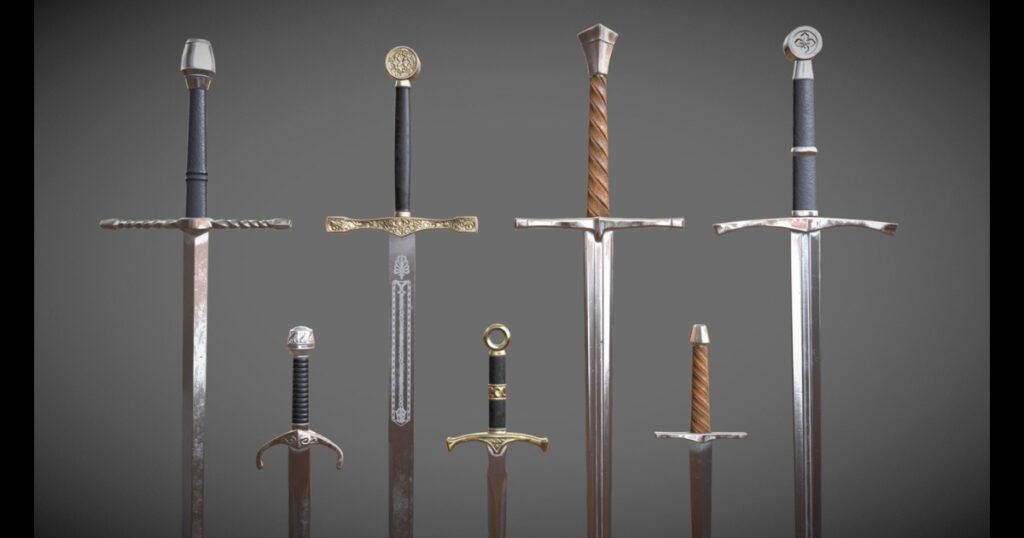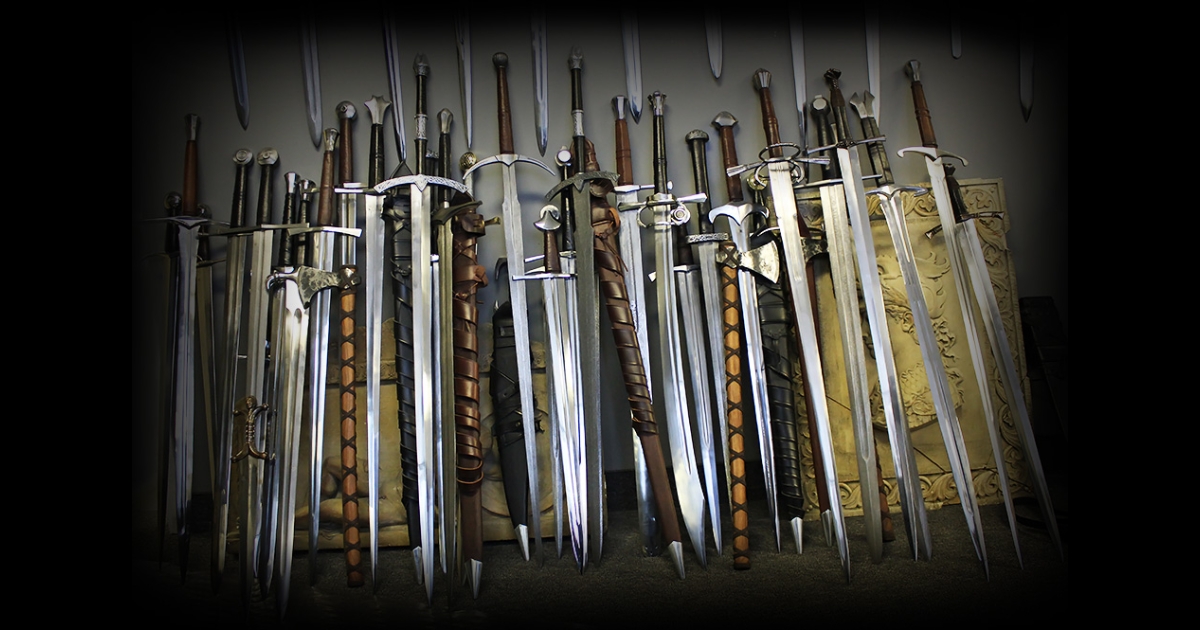In the vast tapestry of American history, few artifacts capture the imagination quite like the Hongen Civil War sword with its distinctive bear headon handle. This unique artifact isn’t just a weapon; it’s a portal to a bygone era, a testament to artistic craftsmanship, and a symbol of personal valor.
As we delve into the rich history of this remarkable Civil War era relic, we’ll uncover a story that’s as captivating as the sword itself.
The Hongen sword stands out in the world of Civil War swords, not just for its exceptional quality, but for the way it encapsulates the spirit of a nation in turmoil.
It’s a tangible link to a time when the United States was forging its identity through the crucible of conflict, and every object carried deep symbolic meaning.
Origins of the Hongen Civil War Sword with Bear Headon Handle
The story of the Hongen Civil War sword begins in the tumultuous 1860s, a time when the United States was torn asunder by internal strife. As the nation grappled with its identity, the Hongen sword emerged as a powerful symbol of strength and unity.
The Birth of a Legend
The Hongen sword wasn’t just another Civil War era weapon. It was the brainchild of Master Swordsmith Jeremiah Hongen, a visionary craftsman who sought to create a blade that would stand out in the martial landscape of the time.
Hongen, inspired by the rugged wilderness of his native Pennsylvania, chose the bear as his muse—a decision that would define his legacy.
Jeremiah Hongen’s workshop, nestled in the rolling hills of Pennsylvania, became a hub of innovation. Here, the blend of traditional European sword-making techniques and American frontier spirit gave birth to something truly unique.
Hongen wasn’t content with merely replicating existing designs; he wanted to create a sword that spoke to the American experience.
Why the Bear?
The bear headon handle wasn’t just a quirky design element. It was a deliberate choice, steeped in symbolism:
- Symbol of strength: The bear represented raw power and courage
- Connection to nature: It reminded soldiers of the land they were fighting for
- Intimidation factor: The fierce visage of a bear struck fear into enemies
- American identity: The bear was a quintessential symbol of the American wilderness
As the Civil War raged on, the Hongen sword evolved, with each iteration refining its balance of form and function. The bear head, once a simple adornment, became increasingly detailed, reflecting the growing skill of Hongen’s craftsmen.
“In the bear, we saw ourselves—resilient, fierce, and deeply connected to this land we call home.” – Jeremiah Hongen, from his personal journals
Design and Craftsmanship

The Hongen Civil War sword stands as a testament to the pinnacle of 19th-century American craftsmanship. Every aspect of its design speaks to a dedication to excellence that sets it apart from other Civil War swords.
Blade Characteristics
| Feature | Description |
| Material | High-carbon steel, often Damascus-patterned |
| Length | Typically 32-36 inches |
| Weight | Balanced at 2-3 pounds |
| Edge | Razor-sharp, capable of both slashing and thrusting |
| Fuller | Deep blood groove to reduce weight and improve balance |
The blade was forged using techniques that combined Old World tradition with New World innovation. Hongen’s smiths employed a unique folding method that created intricate patterns in the steel, enhancing both its strength and beauty.
This process, which could take weeks for a single blade, involved repeatedly folding and hammering the steel, creating layers that numbered in the thousands.
The result was a blade that wasn’t just beautiful, but also incredibly strong and flexible. Soldiers who carried Hongen swords often spoke of their reliability in battle, with the blades maintaining their edge even after heavy use.
The Iconic Bear Headon Handle
The bear headon handle is what truly sets the Hongen sword apart. Crafted from a single piece of brass or bronze, the handle was often further embellished with:
- Inlaid silver for the bear’s eyes, giving them a lifelike glint
- Textured fur patterns etched into the metal, creating a tactile experience
- Customized engravings for high-ranking officers, often including their name and rank
- Gold leaf accents for the most prestigious commissions
This attention to detail in the handle design made each Hongen sword a personal badge of honor for its owner. The craftsmanship was so fine that many soldiers considered their Hongen swords to be family heirlooms from the moment they received them.
The ergonomics of the handle were also carefully considered. Despite its ornate appearance, the bear head was designed to fit comfortably in the hand, with the bear’s ears providing natural finger grooves for a secure grip.
Symbolism and Cultural Significance
The Hongen Civil War sword with its bear headon handle was more than a weapon—it was a cultural touchstone that reflected the values and aspirations of a nation in conflict.
The Bear in American Folklore
In American culture, the bear has long been associated with:
- Courage and strength, qualities valued in both military and civilian life
- Independence and self-reliance, core American values
- Protection and nurturing, reflecting the dual nature of the soldier as both warrior and protector
- Adaptability and resourcefulness, essential traits for survival in both wilderness and warfare
These qualities resonated deeply with soldiers on both sides of the conflict, making the Hongen sword a coveted item among officers and enlisted men alike.
The bear symbolism transcended the divide between North and South, speaking to a shared American identity that persisted even in times of war.
Military Symbolism
During the Civil War era, swords were not just tools of war but symbols of leadership and authority. The Hongen sword, with its distinctive bear head, became a sign of:
- Tactical innovation, reflecting the bearer’s forward-thinking approach to warfare
- Strategic thinking, with the bear representing the cunning needed to outmaneuver the enemy
- Personal bravery, as the bear was known for its fearlessness in the face of danger
- Command presence, with the unique design drawing attention and respect
Owning a Hongen sword was seen as a mark of distinction, often awarded to officers who had shown exceptional valor on the battlefield. It became a way for soldiers to carry a piece of home with them, a reminder of the wilderness and freedom they were fighting to preserve.
Historical Context and Usage
To truly appreciate the Hongen Civil War sword, we must understand the context in which it was used. The American Civil War was a crucible that forged not just a nation, but also the weapons and tactics that would define modern warfare.
Famous Battles
The Hongen sword saw action in some of the most pivotal engagements of the war:
- Gettysburg (1863): Union cavalry officers wielded Hongen swords in their charge against Pickett’s Division. The swords’ sharp edges and perfect balance proved crucial in close-quarters combat.
- Vicksburg (1863): Confederate generals were known to carry personalized Hongen swords during the siege. These swords became symbols of resistance and determination during the long months of the campaign.
- Appomattox Court House (1865): Eyewitness accounts describe Hongen swords present at Lee’s surrender to Grant. In this solemn moment, the swords served as reminders of the bravery displayed on both sides.
Notable Figures
Several high-ranking officers on both sides of the conflict were known to favor the Hongen sword:
“I carry this sword not just as a weapon, but as a reminder of the bear-like strength our cause requires.” – General Joshua Lawrence Chamberlain, Union Army
Chamberlain, known for his heroic defense of Little Round Top at Gettysburg, often attributed his courage to the spirit of the bear embodied in his Hongen sword.
Confederate General J.E.B. Stuart, famous for his cavalry raids, was also said to possess a Hongen sword. His men spoke of how the bear head seemed to come alive in the heat of battle, inspiring them to fight with the ferocity of the animal it represented.
The sword’s reputation for quality and its symbolic depth made it a prized possession among those who could afford it. Some officers even went into debt to acquire a Hongen sword, believing it would bring them luck and success on the battlefield.
Legacy and Collectibility

Today, the Hongen Civil War sword with its bear headon handle is a highly sought-after collector’s item. Its historical significance and artistic craftsmanship make it a valuable piece of Americana.
Identifying Authentic Hongen Swords
For collectors, authenticating a Hongen sword requires careful examination:
- Look for the Hongen maker’s mark on the blade, usually near the hilt
- Check the bear head for detailed craftsmanship, including the texture of the fur and the expression in the eyes
- Examine the blade for the characteristic Damascus pattern, which should be intricate and unique to each sword
- Verify the sword’s provenance through historical records, such as military inventories or family histories
Preservation Challenges
Maintaining these historical artifacts requires special care:
- Climate-controlled storage to prevent rust and degradation of materials
- Regular oiling of the blade to maintain its luster and prevent corrosion
- Careful handling to preserve the delicate engravings and inlays
- Professional restoration when necessary, using period-appropriate techniques and materials
Many museums and private collectors go to great lengths to preserve these swords, recognizing them as invaluable windows into Civil War era craftsmanship and symbolism.
The Collector’s Market
The rarity of authentic Hongen swords has driven their value to impressive heights. At recent auctions, well-preserved examples have fetched prices upwards of $50,000, with particularly historic pieces commanding even higher sums.
Collectors prize these swords not just for their monetary value, but for the stories they tell. Each Hongen sword is a unique artifact, carrying with it the weight of history and the personal tales of those who wielded it.
Conclusion
The Hongen Civil War sword with its bear headon handle stands as a remarkable testament to an era of American history marked by conflict and innovation. Its unique design, symbolic representation, and historical significance make it more than just a weapon—it’s a tangible link to our past.
As we reflect on the technological evolution of warfare and the cultural significance of military artifacts, the Hongen sword reminds us of the artistry and symbolism that once accompanied soldiers into battle. It’s a powerful emblem of personal valor and a window into the complex tapestry of Civil War era America.
Whether you’re a history buff, a collector of militaria, or simply someone fascinated by the stories our ancestors left behind, the tale of the Hongen Civil War sword is one that continues to captivate and inspire. It’s a reminder that even in times of great strife, human creativity and craftsmanship can produce objects of lasting beauty and meaning.
Also Read : Sandra Orlow: Behind the Lens of a Visionary Artist

Taylor Swift is the founder and lead writer behind the independent blog genrealpro.com










